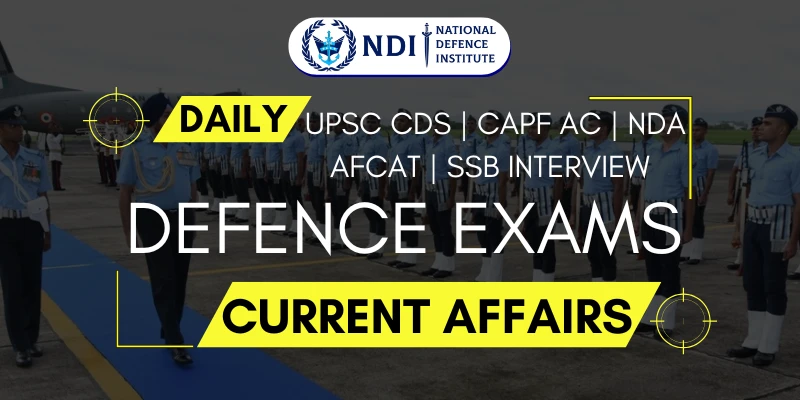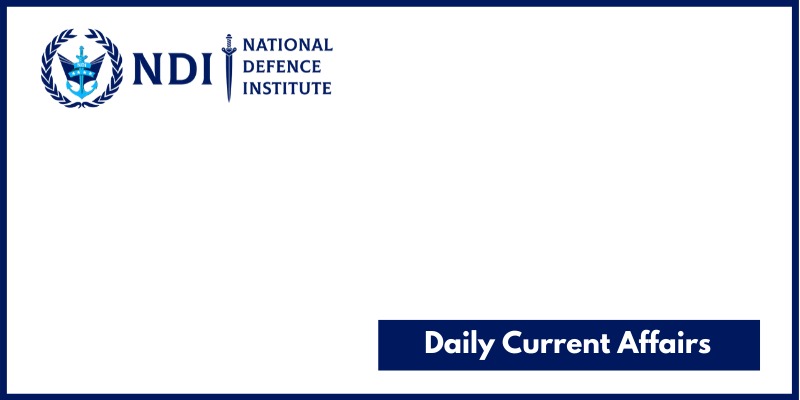What is SWIFT?
- The SWIFT system stands for the Society for Worldwide Interbank Financial Telecommunication and is a secure platform for financial institutions to exchange information about global monetary transactions such as money transfers.
- While SWIFT does not actually move money, it operates as a middleman to verify information of transactions by providing secure financial messaging services to more than 11,000 banks in over 200 countries.
- Based in Belgium, it is overseen by the central banks from eleven industrial countries: Canada, France, Germany, Italy, Japan, the Netherlands, Sweden, Switzerland, the United Kingdom, and the United States, besides Belgium.
What does the move aim to achieve?
- Excluding Russian banks from the SWIFT platform is expected to hit the country’s economy hard.
- While workarounds to SWIFT have been tried, none have proven to be effective.
- During the last seven years, Russia, too, has worked on alternatives, including the SPFS (System for Transfer of Financial Messages) — an equivalent of the SWIFT financial transfer system developed by the Central Bank of Russia.
About:
- The collaboration is between the Defence Research and Development Organisation (DRDO) and French engine maker Safran.
- External Affairs Minister S. Jaishankar discussed this issue with French Defence Minister Florence Parly during his visit to Paris.
- Last year, the government had informed Parliament that it is proposed to develop indigenous engines for powering aircraft such as the Light Combat Aircraft (LCA) variants and AMCA in association with an international engine house.
- The initial design of the AMCA started way back in 2009 and is envisaged as a twin engine stealth aircraft with internal weapons bay , which has been developed for the first time and for which the design is complete, as reported by The Hindu earlier.
- The manufacturing and production of the aircraft is planned through a Special Purpose Vehicle, which will also involve private industry.
About:
- The incoming member is a noted economist, author and columnist, and brings his nearly two decades of experience in the financial sector to the table.
- Prior to his stint in the Finance Ministry, Mr. Sanyal was the Global Strategist and Managing Director at Deutsche Bank until 2015.
- Sanyal was instrumental in the preparation and publishing of the Economic Survey (2021-22). He is credited with the transitioning of the Economic Survey from the previous two-volume format to a single volume format alongside a separate volume for statistical tables.
Economic Advisory Council to the Prime Minister (EAC-PM)
- It is a non-constitutional, non-permanent and independent body constituted to give advice on economic and related issues to the Government of India, specifically to the Prime Minister.
- At present, EAC-PM is chaired by Dr. Bibek Debroy (Chairman).
About:
- The new Armed Forces Preparatory School by the Delhi government, with its campus in Southwest Delhi’s Jharoda Kalan, will be its first experiment with a fully residential school.
- The announcement for an armed forces preparatory school had been made by Deputy Chief Minister Manish Sisodia in his 2021 budget speech, under the government’s ‘Deshbhakti Budget’. Applications for admission to the first batch are currently ongoing.
- The school is being considered as one of the government’s new Schools of Specialised Excellence.
- According to a government official, the school’s curriculum will have two parts — a basic foundational study component and another on the specialisation, which would entail preparation for National Defence Academy (NDA) and Services Selection Board (SSB) tests and physical readiness.
About:
- Along with Austria, Ireland, Cyprus and Malta, Finland and Sweden are two EU states that are not members of NATO yet. Since the end of the Second World War, both countries remained militarily neutral.
- The North Atlantic Treaty Organization (NATO, also called the North Atlantic Alliance, is an intergovernmental military alliance between 28 European countries and 2 North American countries.
- Established in the aftermath of World War II, the organization implements the North Atlantic Treaty that was signed on 4 April 1949.
- NATO constitutes a system of collective security, whereby its independent member states agree to mutual defense in response to an attack by any external party.
- The NATO headquarters are located in Brussels, Belgium, while the headquarters of Allied Command Operations is near Mons, Belgium.
About:
- He said that Russia could respond to the US sanctions by letting the ISS fall from space. He said the ISS could drop over US or Europe, or over India and China. Its orbital flight path usually does not take it over most of the Russian territory.
- The International Space Station is the only operational space laboratory as of now, orbiting the earth in a trajectory that is about 400 km above the land surface.
- It is operated by more than 15 partner countries. Apart from Russia and the United States, Canada, Japan and several members of the European Space Agency are partners in the ISS.
- The football-field-sized ISS travels at a speed of about 28,000 km per hour. It completes one journey around the earth in about one and a half hours. In one day, therefore, it makes about 16 trips around the world.
- The ISS is not the first space station to be built and operated. Several smaller space stations have been used earlier, the most famous of which have been the Russian Mir space station that operated in the 1980s, and the American Skylab.
- The ISS has been in operation since 1998 and is expected to continue at least till 2028. Russia, however, has indicated that it might pull out of the collaboration earlier, possibly by 2024.
About:
- India’s export of fresh fruits has also witnessed considerable growth. Fresh Grapes is the largest exported items among all fresh food category.
- India's major exporting destination of fresh fruits during 2020-21 were Bangladesh (USD126.6 million), Netherland (USD 117.56 million) and UAE (USD 100.68 million).
- Top ten countries accounted for 82 per cent in India's export of fresh fruits in 2020-21.
- The export of curd (yogurt) and paneer (Indian cottage cheese) has also seen a tremendous growth of 200% from USD 10 Million in April – January 2013-14 to USD 30 Million in April-January 2021022
- It may be noted that dairy export is growing at a Compound Annual Growth Rate of 10.5 per cent in the last five years.
- India's major exporting destination of dairy products in 2020-21 were UAE (USD39.34 million), Bangladesh (USD24.13 million) and U S A (USD22.8 million).
About:
- In its February 11 order, SEBI had observed that the fact of Ms. Ramkrishna having shared confidential internal NSE information with an unknown person had come to light during the regulator’s probe of the co-location matter.
What is co-location?
- In 2009, the NSE started to offer co-location services to members of the exchange.
- Co-location allows a member to set up his server in a specifically earmarked data centre within the NSE’s exchange premises for a certain price.
- And even though this data centre is located in a different wing from the exchange’s trading systems, the relative proximity allows members wishing to gain access to the entirety of buy and sell orders sent to the exchange by market participants, or tick-by-tick data, a headstart of a few microseconds or nanoseconds.
What is the controversy?
- Co-location per se is not illegal. Stock exchanges across the world allow the practice to flourish as a paid service. The SEBI, in fact, had allowed exchanges to offer co-location in 2008.
- However, a whistleblower in 2015 alleged that some exchange members were able to manipulate NSE’s co-location services to their own benefit with the support of certain officials in NSE’s IT department.
About:
- According to the Bhakra Beas Management Board Rules, 1974, the member (power) in BBMB was from Punjab and the member (irrigation) was from Haryana.
- But in the amended rules of 2022, this requirement has been done away with. Opposition parties are arguing that the abolition of the permanent membership of Punjab and Haryana in the BBMB was an attack on the rights of Haryana.
Background
- As per the Indus Waters Treaty of 1960, the waters of Ravi, Beas and Sutlej are allocated to India and are available to be utilised for irrigation purposes within the country.
- On the Beas and Sutlej, Bhakra Dehar and Beas power projects were constructed.
- The BBMB controls these projects, and the expenditure is shared by partner states in the ratio of their shares.
- Under the Punjab Reorganisation Act 1966, the share from BBMB was divided between Punjab and Haryana in the ration of 58:42, with some share to Rajasthan and Himachal Pradesh subsequently added.
- Primarily, Punjab and Haryana are the two major beneficiaries, and Punjab has the larger share.
About:
- Union Environment Minister Bhupender Yadav launched an “action plan” at the 19th meeting of the National Tiger Conservation Authority (NTCA) on January 7 saying, “The cheetah that became extinct in independent India, is all set to return.”
- The action plan states that a cohort of 10-12 young cheetahs that are ideal for reintroduction would be imported from Namibia or South Africa as a founder stock during the first year.
- Around 35 cheetah would be needed over time to establish such a stock.
- The proposed site for introduction is the Kuno Palpur National Park (KNP) in Madhya Pradesh, though at least three other reserves in Central India are being considered.
- According to the plan, the Central government, along with the Environment Ministry and the Cheetah Task Force, will create a formal framework to collaborate with governments of Namibia and/or South Africa, through the Ministry of External Affairs.
Cheetah
- Scientific name: Acinonyx Jubatus.
- Common Name(s): Cheetah, Hunting Leopard.
- Speed: It is the fastest land animal. It can reach speeds of 30 m/s.
- Habitat: Cheetah lives in Dryland Ecosystem i.e. Grasslands, Scrublands and Open Forests.
- Indian scenario: Cheetah was declared extinct in India in 1952. It is the only large mammal to have been declared extinct in our country in recorded history.





























































































































































.png)
.png)
.png)
.png)
.png)


.png)
.png)
.png)





.png)
.png)






.png)
.png)
.png)
.png)
.png)
.png)
.png)
.png)
.png)

.png)







.png)
.png)


.png)
.png)
.png)


.png)

.png)
.png)





.jpg)

.png)
.png)


.png)

.png)
.png)
.png)

.jpg)

.jpg)


.png)

.png)
.png)
.png)
.png)
.png)
.png)
.png)
.png)
.png)
.png)




.png)

.png)





.png)
.png)
.png)
.png)
.png)
.png)
.png)
.png)
.png)
.png)
.jpg)
.jpg)

.png)
.png)
.png)
.png)
.png)
.png)
.png)
.png)
.png)
.png)
.png)
.png)
.png)
.png)
.png)
.png)
.png)
.png)
.png)
.png)
.png)
.png)



.png)
.png)

.jpg)
.jpg)


.jpg)
.jpg)
.jpg)
.jpg)
.jpg)

.jpg)








.jpg)
.jpg)
.jpg)
.jpg)
.jpg)

















.jpg)
.jpg)







.jpg)


















.jpg)
.jpg)






























































































.jpg)
.jpg)


























.jpg)

.jpg)










.jpg)








.jpg)




.jpg)










.jpg)


















.jpg)









































.jpg)














.jpg)
.jpg)
.jpg)





.jpg)

.jpg)
.jpg)





































































.jpg)


































.jpg)
.jpg)
















































.jpg)












.jpg)


.jpg)




.jpg)
.jpg)
.jpg)

.jpg)
.jpg)
.jpg)
.jpg)

.jpg)
.jpg)
.jpg)

.jpg)
.jpg)
.jpg)
.jpg)
.jpg)
.jpg)
.jpg)
.jpg)

.jpg)


.jpg)
.jpg)
.jpg)
.jpg)
.jpg)
.jpg)
.jpg)
.jpg)
.jpg)
.jpg)











.jpg)
.jpg)





.jpg)
.jpg)
.jpg)
























.jpg)
























.jpg)









.jpg)
.jpg)







.jpg)
.jpg)









































.jpg)
.jpg)
.jpg)
.jpg)
.jpg)

.jpg)
.jpg)
.jpg)
.jpg)
.jpg)


.jpg)
.jpg)
.jpg)
.jpg)
.jpg)

.jpg)
.jpg)
.jpg)
.jpg)
.jpg)
.jpg)
.jpg)
.jpg)
.jpg)
.jpg)
.png)

.png)
.png)

.png)
.png)
.png)
.png)


.jpg)
.jpg)

.jpg)
.jpg)
.jpg)

.png)
.png)
.png)
.png)
.png)
.png)
.png)

.png)
.png)
.png)
.png)
.png)
.png)
.png)
.png)
.png)
.png)





































































-min.png)



.png)




.png)








































